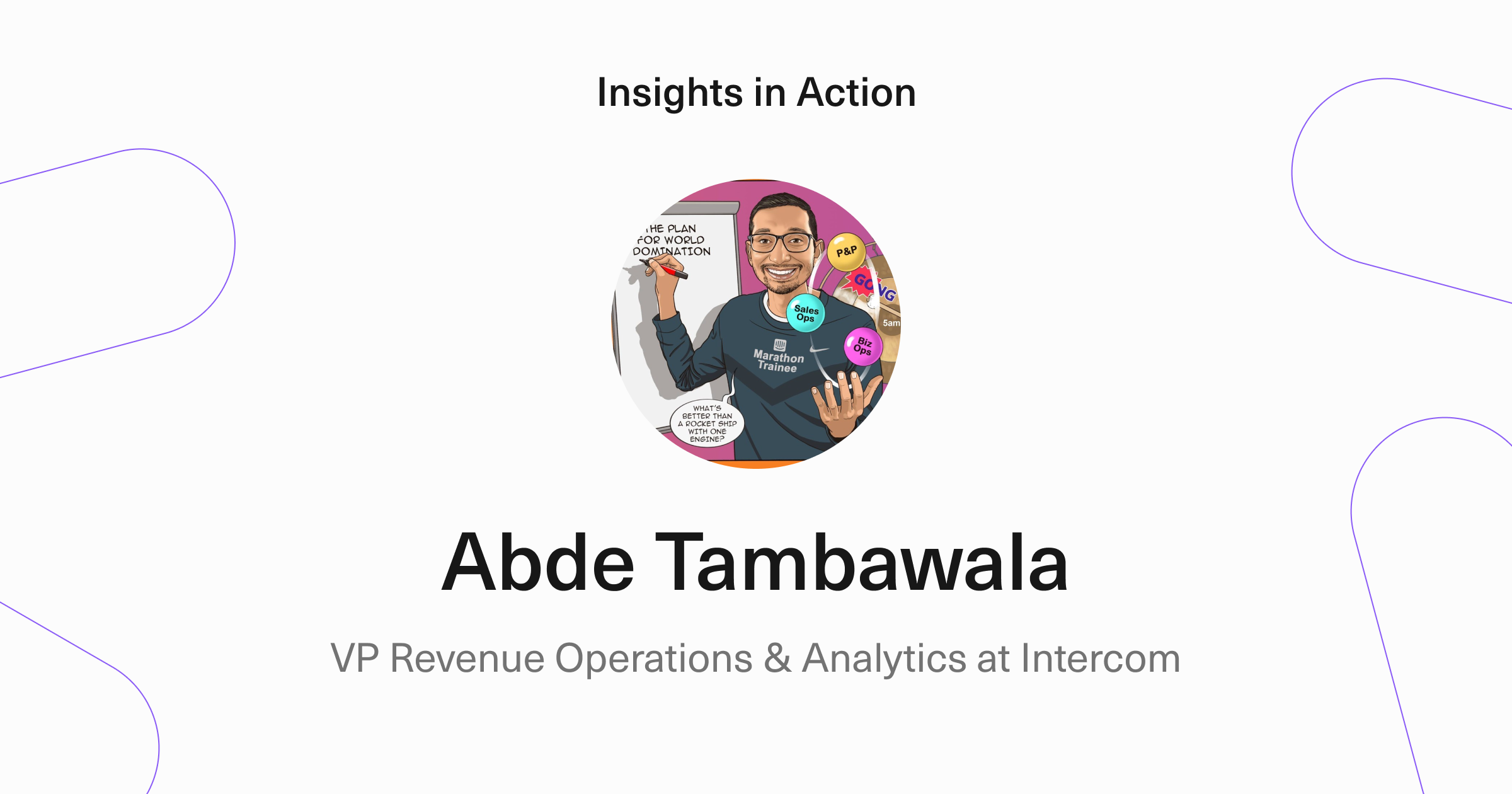How to run your SaaS pricing project
Bobby Pinero | | 3 min read

Today I had the chance to talk with Abde Tambawala, a good friend, former colleague at Intercom, and one of the leading authorities on software pricing. As a partner at Simon-Kucher, he led over twenty pricing and packaging projects for companies of all sizes, then headed Monetization and Strategy at Atlassian. Today, he continues to apply his pricing expertise as the VP of Revenue Operations and Analytics at Intercom.
Abde took the time to break down one of the most important decisions an early stage company can make: how to price your product. He applies a structured framework to demystify the process, leading to more profits, a better value-added split, and a stronger relationship with your customers.
If you’re at all interested in playing with pricing, this is a must-watch.
The Importance of Pricing
Abde made his position clear: “Pricing is the single most important business decision a founder or CEO can make.”
Most can intuit the impact that pricing has on your bottom line, but Abde took it one step further by breaking down just how much it drives your customer relationships and market position.
He says there are three main impacts of pricing:
Philosophical:
This was the first impact that Abde listed, and with good reason. Pricing is one of the first and most salient ways that you communicate your product’s value to potential users.
While lower prices will generally support higher volume, you should move past the Econ 101 idea that demand will necessarily fall with every dollar you raise prices. When a lead knows little else about your product, they’ll put heavy weight on what you tell them it’s worth.
Economic:
Perhaps the most obvious, price optimization has a huge impact on revenue and profits. Abde cited a Mckinsey Study of 2000 companies, which found that just a 1% improvement in pricing can drive a 10-12% increase in operating profits.
Differentiation:
Every market is cost-sensitive to some extent, and your pricing model will go far in distinguishing you from the competition. This is especially true if your pricing metrics and packaging are unique, and more in line with the value your customers are getting from the product.
This is especially true when it comes to pricing metric, such as a usage-driven or flat-fee model. Abde cited Lyft and Airbnb’s dynamic, demand-driven pricing models as highly disruptive strategies.
Pricing: A Two-Way Street
Abde took his time at Atlassian as a case study in how you can raise prices and enjoy happier customers.
Through customer research, the team at Atlassian learned that Jira (their flagship product) provided huge value for users. Users had a much higher willingness-to-pay than the product’s price at the time.
Atlassian wanted to extract more of that value, but how? They found they could add value while raising prices in three ways:
1) Move from a tier-based to usage-based pricing metric.
2) Evolve their packaging with new premium and lower-cost offerings.
3) Take the burden of hosting from customers to Atlassian, migrating data storage to the cloud.
With each change, they were able to achieve huge price (and revenue) increases while giving customers more value and deepening their relationship with Atlassian’s software.
The biggest takeaways: align your pricing model with the value you add, and don’t raise prices without some commensurate added value.
Framework First
Figuring out where to start with pricing is often times one of the most difficult challenges. It’s a huge problem with a very large surface area across your business.
Abde’s take: “Pricing can be an unbounded problem, or it can also be a very structured exercise.”
As other leaders have told us, it pays to build a cohesive framework for making big decisions, measure their impact, and improve in future iterations.
Abde broke down a five-step exercise for price optimization:
1) Understand your customer’s needs by segment through historical data. Study product usage patterns, discount trends, retention dynamics, etc.
2) Generate new insights by talking your customers. Learn from customers and prospects through surveys and experiments, gathering both qualitative and quantitative data.
3) Use that data to build a financial model. Do some scenario analysis and find the optimal pricing strategy, per the model you built.
4) Roll out price changes. Test the predictive ability of your financial models by rolling out changes. A/B testing works if you have a big user base, while before/after is better for smaller samples.
5) Assess impact and continue iterating!
We go into detail for how to nail each of these steps, so watch the video to benefit from a more intentional, data-driven approach to pricing.
Find Your Value, Give Some Back
This is one talk you’ll have to watch to get the full benefit of Abde’s knowledge.
His key advice is to focus on metric and packaging, rather than simply the dollar figure you charge. Make sure your pricing model, particularly your chosen metric, aligns with what the customer gets from the product. If you raise prices, make sure you’re adding more value as well!
Lastly, Abde provides the tools to execute on a better pricing strategy through a coherent, informed framework. Any company can apply Abde’s steps and strategies to achieve deeper customer relationships and a healthier bottom line.

By Bobby Pinero
CEO and Co-Founder of Equals.

